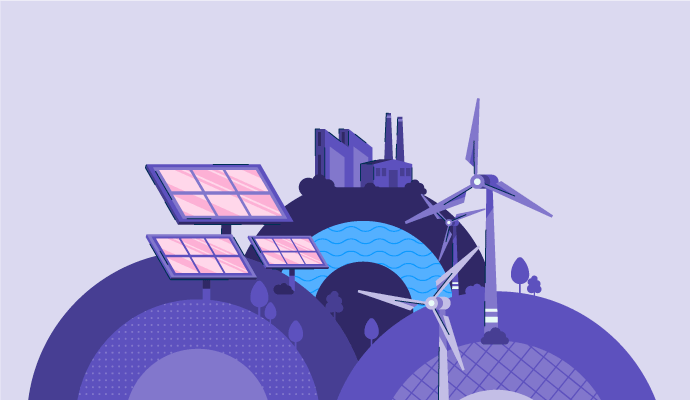Europe is at the forefront of the global transition towards sustainable energy sources, with renewable energy playing a pivotal role in reducing carbon emissions, combating climate change, and ensuring a clean and secure energy future. In recent years, the continent has made significant strides in harnessing the power of renewables, setting ambitious targets and investing in innovative technologies to shape a greener and more sustainable energy landscape. This article explores the current state of renewable energy in Europe, highlighting key trends, achievements, and the challenges that lie ahead.
The Renewable Energy Revolution
Europe’s commitment to renewable energy is evident through its remarkable progress in wind, solar, hydro, and biomass energy. As of my last knowledge update in September 2021, several countries had already made substantial contributions to this transition, and the momentum has likely continued to grow.
- Wind Power: Wind turbines are a common sight across the European landscape, and countries like Germany, Spain, and the United Kingdom have emerged as leaders in harnessing wind energy. Offshore wind farms, in particular, have gained popularity, with projects in the North Sea and the Baltic Sea taking advantage of strong and consistent winds.
- Solar Energy: Solar photovoltaic installations have seen exponential growth, driven by decreasing costs and supportive policies. Southern European countries such as Spain, Italy, and Greece enjoy abundant sunshine and have rapidly expanded their solar capacity. Germany, despite its relatively lower solar potential, has also made substantial contributions.
- Hydroelectric Power: Many European nations have a long history of using hydropower, and this remains a significant contributor to the region’s renewable energy mix. Countries like Norway, Sweden, and Austria have invested in modernizing and expanding their hydropower facilities.
- Biomass and Bioenergy: Biomass and bioenergy are essential components of Europe’s renewable energy portfolio, using organic materials such as wood, agricultural residues, and waste to generate power. Countries like Finland and Sweden have successfully integrated bioenergy into their energy systems.
Policy Framework
The European Union (EU) has been instrumental in promoting renewable energy across the continent. The EU’s Renewable Energy Directive, updated in 2018, established a binding target for each member state to reach a 32% share of renewables in their final energy consumption by 2030. Additionally, the EU Green Deal, announced in 2019, aims for a climate-neutral Europe by 2050, with renewable energy playing a critical role in achieving this goal.
To facilitate this transition, the EU has developed various support mechanisms, including feed-in tariffs, subsidies, and tax incentives. These measures have encouraged investment in renewable projects, making them economically viable and attractive to investors.
Technological Advancements
One of the driving forces behind Europe’s success in renewable energy is its commitment to research and development. European nations have been leaders in developing cutting-edge technologies in the sector. For instance:
- Energy Storage: Europe has invested in energy storage solutions, including advanced battery technologies, to overcome the intermittent nature of renewables. Battery storage facilities are being deployed alongside renewable energy projects to store excess electricity for later use.
- Grid Modernization: The integration of renewable energy sources requires a modernized and flexible grid infrastructure. Europe is investing in grid expansion and smart grid technologies to ensure a reliable and efficient energy supply.
Challenges and Future Outlook
While Europe has made significant progress in adopting renewable energy, several challenges remain on the horizon:
- Energy Transition Costs: The transition to renewables involves substantial upfront costs for infrastructure development. Policymakers need to balance these investments with the need for affordable energy.
- Grid Integration: Integrating intermittent renewables into the grid is a complex task. Grid infrastructure needs to be upgraded to accommodate variable power generation and ensure a stable energy supply.
- Energy Security: Europe’s reliance on imported fossil fuels remains a concern. Achieving energy security through diversified and locally sourced renewables is a priority.
Europe’s commitment to renewable energy is a beacon of hope in the global effort to combat climate change. The continent’s impressive progress in wind, solar, hydro, and bioenergy highlights its dedication to a sustainable energy future. With ambitious targets, supportive policies, and ongoing innovation, Europe is poised to continue leading the way in the global renewable energy revolution, inspiring other regions to follow suit in the journey toward a cleaner and more sustainable world.


No responses yet